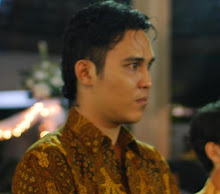Cool weather will greet you when you pass by the area north east of Malioboro, the area to the east side of Code River that is now named Kotabaru. Shady trees grow in the center space of the streets, sheltering people from the sun and dividing the two-way street. With old buildings standing firmly on both sides of the street, Kotabaru area becomes an area worth more than being passed by.
Kotabaru, previously named Nieuwe Wijk, is an area that has been improving since 1920 as consequence of increased crowdedness of Loji Kecil area. The growth of sugar industry, plantation, and increased interest of developing education and health increased the number of Dutch people who lived in Yogyakarta. Kotabaru becomes an alternative dwelling area with complete facilities, similar to Menteng area in Jakarta.
You will feel distinctive impression once you enter this area. The design of the area was set following radial pattern as common towns in Netherlands. It is different from other areas in Yogyakarta that most of them were set following points of compasses. Big trees, plants of flowers and fruits in this area signaling that Kotabaru was designed as a garden city, completed with boulevard wide streets.
Each corners of Kotabaru are not only beautiful, but they also keep stories. Kewek road as the south entrance of this area, for example, keeps funny story. The bridge road connecting the east and west sides of Code River was named Kerkweg road; due to difficulty to pronounce such a word by Javanese people, it became Kewek. Forming as a bridge, the road that is now named Abubakar Ali is also called Kreteg Kewek.
Directing northwards from Kreteg Kewek, you will find Saint Anthony church. Characteristic of European building can be seen from the high minaret in the front part of the church, 16 big concrete columns, and the concave ceiling. The church that was built in the year 1926 and was previously named Antonius van Padua began to grow when the praying place in Mr Perquin's house (in front of Syuhada Mosque) did not accommodate the Catholics anymore.
Entering Kotabaru further, you will find some historical buildings, for example Saint Ignatius College building that was used as the office of Defense Ministry, the building of SMAN 3 (high school) as AMS building, the building of SMP 5 (junior school) that was used as Normalschool, and the building of SMU BOPKRI I (high school) that was functioned as Christelijke MULO building and Military Academy. You will find also the office of Tourism Council as the end of the guerilla war by General Soedirman, an Indonesian national hero that was famous for his guerilla struggle.
One building that is architecturally pronounced is Bimo building. The building was designed with art deco concept, an architecture that grew fast in 1920s-1930s, giving priority to local traditional aspect by being open to new things and accompanied by the spirit to be different from the existing buildings. The shape of Bimo building is stretching like other characteristic European buildings, but the upper front part is in arching form.
Other prominent, historical building is the office of Jiwasraya Insurance. During the Dutch colonization, this building was inhabited by an officer of Nill Maatschappij Insurance Company, while during the Japanese colonization it was dwelled by Butaico Major Otsuka, a Japanese army senior officer. On 6 October 1945, this building was used as a meeting place between Moh Saleh Bardosono and Otsuka in the frame of weapons handover.
If you not yet satisfied looking the old buildings, you can walk along each corners of Kotabaru. A row of old buildings with Dutch architecture is found easily. Some of them having historical value are the building located at the end of the road leading to Gondolayu Bridge that used to function as the office of Foreign Affairs, the house of Brigadier General Katamso to the east of Kridosono Stadium, and the building of electricity post with characteristic Dutch design.
The corners of Kotabaru now grow dynamically. There are some cafes to relax after joining tour to enjoy the old cities, an art gallery to hold exhibitions, and some places where you can taste various cuisines, even a gymnastic place. The enchantment of Kotabaru as a garden city can still be enjoyed while sitting and sheltering on either side of the street.

No comments:
Post a Comment